Sensor Sweep: Black Mask, A. Conan Doyle, Philip K. Dick, Roger Zelazny, and more F. Scott Fitzgerald
Monday , 24, December 2018 Sensor Sweep 2 CommentsWriting (Black Gate): The hardboiled school was born in the page of Black Mask Magazine under the editorship of George W. Sutton, with Carroll John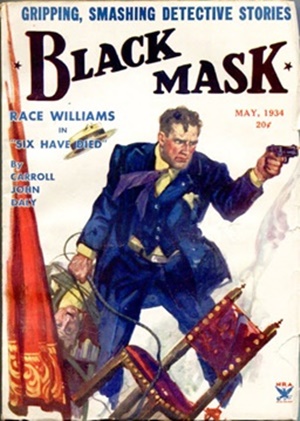 Daly’s “Three Gun Terry” (which I wrote about here…) and “Kings of the Open Palm,” and Dashiell Hammett’s “Arson Plus,” appearing in 1923. In 1924, Sutton resigned and circulation editor Phil Cody replaced him.
Daly’s “Three Gun Terry” (which I wrote about here…) and “Kings of the Open Palm,” and Dashiell Hammett’s “Arson Plus,” appearing in 1923. In 1924, Sutton resigned and circulation editor Phil Cody replaced him.
Cody pushed for more stories featuring Race Williams and the Continental Op, encouraged Erle Stanley Gardner to develop Ed Jenkins (‘The Phantom Crook’), and added Frederick Nebel and Raoul Whitfield to the magazine. Cody was pushed out by publisher Eltinge Warner in 1926, with Cody’s approval (he later became President of the company). Joseph Shaw, a former bayonet instructor in the army and an unsuccessful writer with zero editorial experience, took the reins (I mean, sure, why not?).
Writers (Gazette Net): Until recently, I knew little about the super sleuth Sherlock Holmes, and even less about his creator, Arthur Conan Doyle. As an 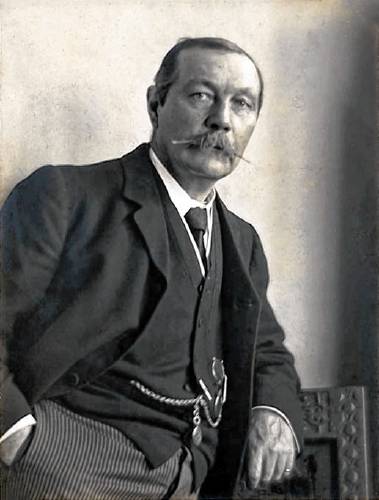 adolescent, I was captivated by his amazing tales, but soon my interests changed and my reading shifted to other writers.
adolescent, I was captivated by his amazing tales, but soon my interests changed and my reading shifted to other writers.
Then last year I read a review of a recently-published audio book of Sherlock Holmes stories, read by the British actor Stephen Fry. Here was my chance to renew my acquaintance. By the time I had taken in a few of these highly entertaining narratives, I was hooked. Soon my curiosity about the author led to researching his life. To my surprise I discovered that he had not only been to America, but had visited the Pioneer Valley.
Writers (Old Style Tales): It is perhaps fitting to ponder these three terms – words which usher images of shadow and soft light, of blurred lines and hazy recognitions – before we begin a discussion of the subject of this book. His writings depict lands, minds, and souls drenched in the murky gleam of twilight – a purgatory where extreme meet and merge into uncanny hybrids. Good and evil. Conscious and unconscious. Light and dark. Love and hate. Life and death. Sex and murder. His world was a crepuscular universe cast in deep shade and obscurity, where the night-things of the borderlands – death, the unconscious, fear – came out of the shadows to reign unopposed. It was a twilit purgatory populated by the crepuscular archetypes.
Fiction (Rich Horton): On the 90th anniversary of Philip K. Dick’s birth, I thought I’d repost this review I did long ago of one of his early Ace Doubles.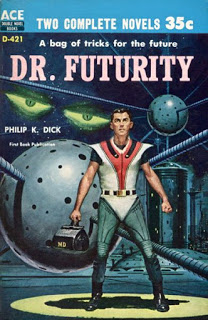
A pairing of two of the best writers to have been regular Ace Double contributors. John Brunner wrote more Ace Doubles than any other writer (24 halves, under his own name and as by Keith Woodcott). Philip K. Dick wrote 7 Ace Double halves, two of which were later reprinted together.* Dr. Futurity is about 50,000 words, Slavers of Space about 42,000.f humanity’s deep insecurities and horrors.
Fiction (Quid plura): Six years passed between the publication of F. Scott Fitzgerald’s third “Philippe” story and the fourth and final entry in the series. By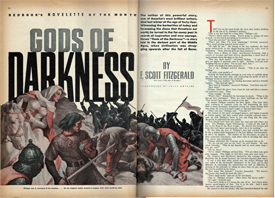 the time “Gods of Darkness” debuted in the November 1941 issue of Redbook―which hailed the seven-page sketch as its “novelette of the month”―Fitzgerald had been dead for almost a year. According to scholar Janet Lewis, Redbook had been the only magazine willing to print the stories, and I’m guessing they ran this final installment out of some combination of nostalgic tribute and contractual obligation.
the time “Gods of Darkness” debuted in the November 1941 issue of Redbook―which hailed the seven-page sketch as its “novelette of the month”―Fitzgerald had been dead for almost a year. According to scholar Janet Lewis, Redbook had been the only magazine willing to print the stories, and I’m guessing they ran this final installment out of some combination of nostalgic tribute and contractual obligation.
Fiction (Superversive SF): There was a period, from 1961-1967, when Roger Zelazny was magic, and every new story of his was an event. He was a 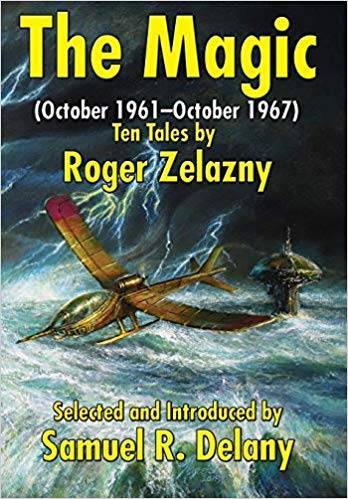 tremendously variable writer. The heart-wrenching “A Rose for Ecclesiastes” (written October 1967) was nothing like the passionate “Graveyard Heart,” which was completely different from the mind blowing “The Ides of Octember,” serialized in Amazing as “He Who Shapes,” which was altogether different from the post-nuclear holocaust romp, “Damnation Alley,” published in Galaxy and released as a film ten years later.
tremendously variable writer. The heart-wrenching “A Rose for Ecclesiastes” (written October 1967) was nothing like the passionate “Graveyard Heart,” which was completely different from the mind blowing “The Ides of Octember,” serialized in Amazing as “He Who Shapes,” which was altogether different from the post-nuclear holocaust romp, “Damnation Alley,” published in Galaxy and released as a film ten years later.
Publishing (Cirsova): We’re moving along at a nice clip towards getting 2019 ready to go. In fact, we even have sketches done for spring plus 1st round edits and layout done. We’ll be sending Vol 2 Issue 1 off to our copy editors before the new year, with any luck.
So, here’s the line-up. We’ve got two issues that are a little thicker than normal (think our 2017 issues) plus something new we’re trying, a Cirsova Summer Special that will showcase a few of the longer (novelette and novella) works we received.
And yes, we’ll be talking more about that first story listed in the Spring issue very soon.
Vol 2. No. 1 Spring (March)
T.V. (Frontier Partisans): Netflix is killing it out there, running through the jungle and down the lost highway. Here are three upcoming Netflix Original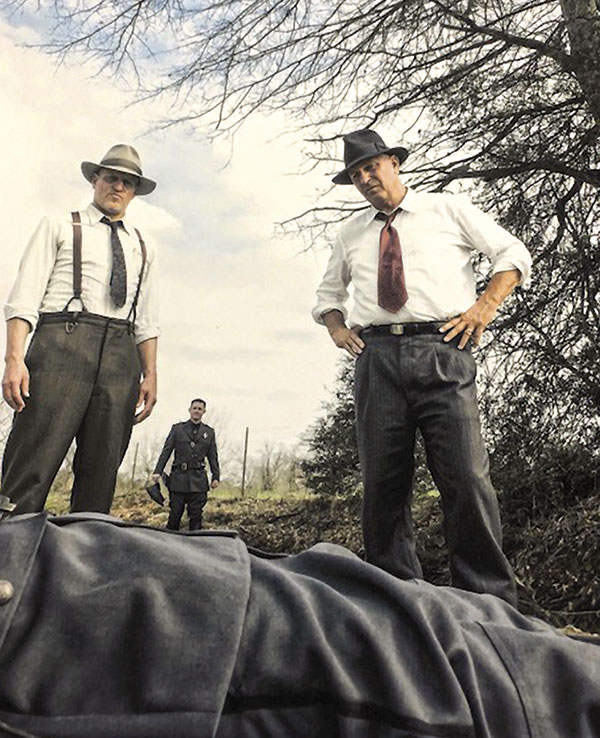 movies that are on target for Frontier Partisans:
movies that are on target for Frontier Partisans:
The Highwaymen (March 2019), with Woody Harrelson and Kevin Costner, tells the tale of the takedown of Bonnie and Clyde. Costner plays Frank Hamer, one of the all-time great lawmen, and one who straddled the transition from the horseback Texas Ranger to modern law enforcement.
Fiction (Pretty Sinister): Here’s a list for you. Tell me if you know what they all have in common.
- Heart to Heartby Boileau-Narcejac
- Withered Murderby Anthony & Peter Shaffer
- The Midnight Mysteryby Bertram Atkey
- Three Dead Menby Paul McGuire
- Thirteen Stannergateof G. M. Wilson
- Murder on the Day of Judgmentof Virginia Rath
- Stranger on the Highwayby H. R. Hays
Pretty easy, I’d say. All of them are fantastic crime novels that still have not been reprinted and the original editions are difficult to impossible to find now.
Fiction (Pulp Net): Well, after too long we have finally gotten Series IV of Altus Press‘ “Argosy Library,” with 10 more books of great, and sometimes 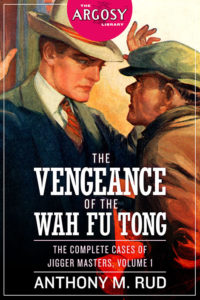 overlooked, fiction that appeared in the early pulps. We get some stand-alone works, as well as volumes of various sub-series.
overlooked, fiction that appeared in the early pulps. We get some stand-alone works, as well as volumes of various sub-series.
As always, most are taken from the pulps started by Frank A. Munsey, who converted his fiction magazines to pulp paper and reduced their price, making them more profitable.
Gaming (Bloody Disgusting): Picture this: You’re excited about Frogwares’ The Sinking City. You’re also new to horror games (and horror in general), and you don’t get what’s the big deal about HP Lovecraft. What do you do? Luckily, Frogwares have released a new video detailing those new to the Father of Cosmic Horror, and just what makes the author so special.
Cinema (Library of Congress): Rarely has the arrival of a film at the Library’s Packard Campus for Audio Visual Conservation occasioned as much 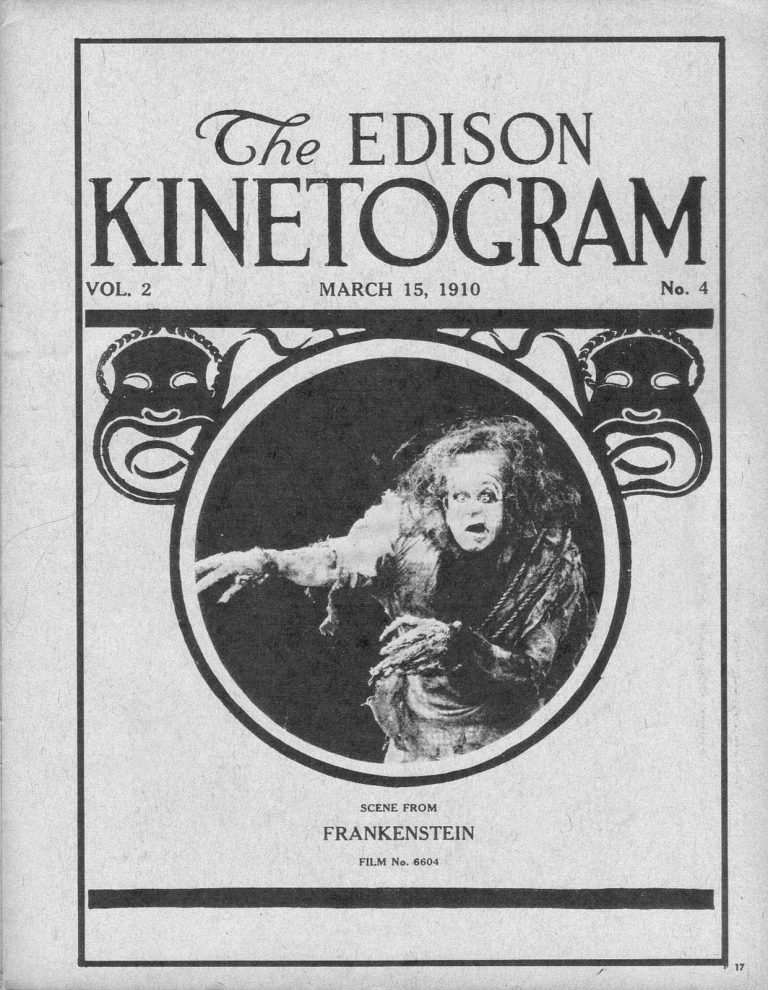 anticipation as the day in April 2015 when we accessed into our collection the sole surviving nitrate print of the first cinematic adaptation of “Frankenstein.” It’s not because the film, produced in 1910 by the Edison Manufacturing Company, is all that revelatory—it’s most decidedly not—or because it’s especially rare, as a quick search on YouTube will attest. Rather, this is an instance in which the story of how a particular reel came to be in our collection is more interesting than the film itself.
anticipation as the day in April 2015 when we accessed into our collection the sole surviving nitrate print of the first cinematic adaptation of “Frankenstein.” It’s not because the film, produced in 1910 by the Edison Manufacturing Company, is all that revelatory—it’s most decidedly not—or because it’s especially rare, as a quick search on YouTube will attest. Rather, this is an instance in which the story of how a particular reel came to be in our collection is more interesting than the film itself.
RPG (RPG Pundit): In previous installments of this series, I’ve talked about a lot of different magical groups or movements; there’s a few lesser ones I haven’t covered, and one in particular I felt I should. That is, a small but not insignificant number of people involved in magick who really believe that the Cthulhu Mythos as published by H. P. Lovecraft in his series of shorts stories are really real, and true to boot!
RPG (Mixed GM): In most fantasy settings, dwarves are portrayed as master miners and diggers. They typically may their homes underground and mine for valuable metals / gems. We’ve all seen it a million times. But what else do they find as they dig?
The bones of dinosaurs and other ancient creatures.
Knights of the Open Palm…now that’s a different take on the KKK–bandits, thieves, and thugs instead of cross burners.
The post on Le Fanu is excellent. He was the Irish Poe.
I like the looks of the Zelazny book, but is there some reason why they couldn’t find anyone other than Delany to write the intro? I mean ANYBODY? Why not Brust or Moorcock or even Ben Bova? For that matter, why not John C. Wright? A blemish on an otherwise cool book.